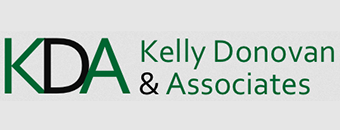You’ve probably heard of this rule: “Keep your resume to one page.”
This was a well-known rule of thumb throughout the years. Over time, many job seekers, especially executives, began using two-page and even three-page resumes. When I started out in the industry, many professional resume writers were writing three-page resumes for some candidates.
In my work with clients, I’ve written one-page, two-page, and three-page resumes, and I’ve had clients land interviews and great jobs with all of these lengths.
I always chose the length based on a solid strategy, carefully evaluating what made sense for that client’s situation and length of work history. People with limited experience usually got one-pagers, and executives sometimes got three-pagers.
What works today?
Attention spans are getting shorter, and nowadays we need to be as concise as possible with resumes–but we still need sufficient space to highlight the value you offer, showcase accomplishments, and incorporate keywords.
My approach to resume length has evolved over time in response to shortening attention spans–a transition that has mirrored what other leading executive resume writers are doing.
In 2019, my breakdown of resume projects is something like:
- 1% One-Page Resumes: These are typically for recent college grads, individual contributors with less than 5-10 years of experience, and people changing careers. I rarely work with these types of job seekers.
- 98% Two-Page Resumes: Most of my clients are best served by a two-page resume. Doing a 20-year career justice on one page is difficult. If many of your competitors submit two-page resumes loaded with accomplishments, how will you be able to get an interview if you limited your resume to the accomplishments that would fit on one page? It’s also hard to ensure the document is keyword-optimized if it’s only one page.
- 1% Three-Page Resumes: These can still be acceptable for very senior-level executives if the experience and accomplishments justify that length.
In my breakdown above, I’m not factoring in international resumes/CVs, which sometimes need to be longer, or medical and academic CVs, which must be longer due to the inclusion of publications, committee assignments, and other details.
Research shows that most recruiters and hiring managers are open to two-page resumes provided that they’re filled with compelling, relevant content. (Unfortunately, too many resumes out there are filled with boring info that’s irrelevant for the job being applied for.)
The persistence of the one-page resume myth
Should you follow the Elon Musk example of executive resume writing?
- Elon Musk doesn’t need a resume. He’s a household name; people already know what he’s accomplished without reading a resume. Plus, I doubt Elon Musk is looking for a job, so he doesn’t even need a resume.
- What about John Doe, the CEO of a $600M company that makes widgets, who simply doesn’t have the level of prominence of Elon Musk? Not to mention Jane Smith, a purchasing director for a $2B company. How will leaders like them convey their accomplishments to complete strangers who’ve never heard of them–on only one page?
The one-page networking resume
The 1.5-page resume
The bottom line: you don’t need to follow outdated rules that might be irrelevant for you. Do what makes sense for your situation.
This article originally appeared on KellyDonovan.com.
